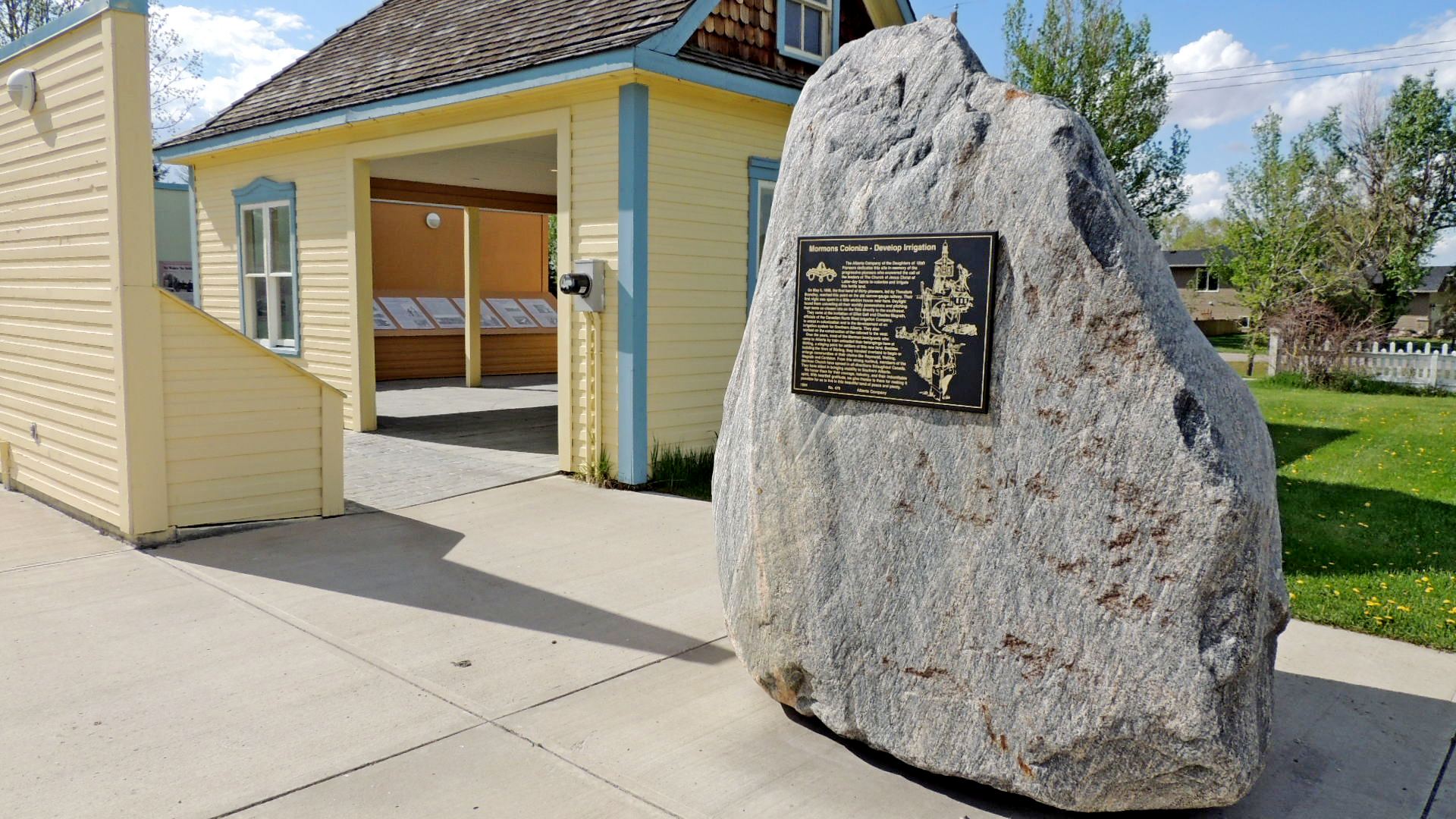|
 CNHS - Stirling, Alberta Posted by:  T0SHEA T0SHEA
N 49° 30.147 W 112° 31.344
12U E 389774 N 5484426
At the invitation of the Canadian Northwest Irrigation Company, Mormons from Utah arrived in Stirling, Alberta on May 5th, 1899. Their purpose was to colonize the area and aid in developing an irrigation system for southern Alberta.
Waymark Code: WMKV5Z
Location: Alberta, Canada
Date Posted: 05/30/2014
Views: 2
At the eastern edge of the village of Stirling is a small park set aside as a historical monument to the settlers of the Stirling area. The park has a plethora of informational plaques outlining the history of settlement and development of the area. It is at the eastern entrance to the village from Highway 4, which is just to the east.
Though one might expect the CNHS plaque to have been located here, it is not. Instead, it has been placed in front of the Village Office at 229 4th Avenue.
Stirling Agricultural Village was designated a National Historic Site of Canada because it is the best surviving example of a Mormon agricultural village.
STIRLING AGRICULTURAL VILLAGE
LE VILLAGE AGRICOLE DE STIRLING
Stirling is Canada's best surviving example of a Mormon agricultural village. With its wide streets, large lots and grouped homesteads, it reflects the model community of Joseph Smith, founder of the Church of Jesus Christ of Latter Day Saints. Stirling was established in 1899 by immigrants from the western United States who were hired to build the Galt Irrigation Canal. Paid partly in land around the village, these hard-working settlers brought this arid region of the prairies into agricultural production and thereby sustained their close-knit community life.
Stirling est le meilleur exemple canadien de village agricole mormon. Avec ses larges rues, ses grands terrains et ses bâtiments de ferme groupés, il rappelle la communauté modèle de Joseph Smith, fondateur de l'Église de Jésus-Christ des Saints des Derniers Jours. Le village lui-même fut fondé en 1899 par des immigrants de l'ouest des État-Unis qui avaient été engagés pour construire le canal d'irrigation Galt. Rémunérés en partie en terres situées autour du village, ces vaillants pionniers aménagèrent cette région aride des Prairies pour y développer une intense vie communautaire.
Stirling Agricultural Village occupies one-square mile (260 hectares) of land in the heart of the short-grass prairie of southern Alberta, appearing as an oasis of trees and farmsteads amid a flat, open landscape. The one-section plat is laid out in a regular grid of wide streets with each ten-acre (4.1 hectares) block divided into large lots with widely spaced, wood-frame houses, agricultural outbuildings, gardens and animal pens. The village also includes a commercial area, a school and a church.
Stirling Agricultural Village was designated a national historic site of Canada because it is the best surviving example of a Mormon agricultural village.
The heritage value of the village resides in its illustration of a typical Mormon settlement form from the turn of the twentieth century. It was introduced to southern Alberta by members of the Church of Jesus Christ of Latter-day Saints who settled in this region during the Great Wheat Boom era from the late 1890s to 1914. The village of Stirling was founded in 1899 through a partnership between the Alberta Railway and Irrigation Company and the LDS Church to bring American immigrants to build an irrigation canal and found two villages, Stirling and Cardston.
From the National Heritage Register
Classification: National Historic Site

Province or Territory: Alberta

Location - City name/Town name: Stirling, AB

Link to Parks Canada entry (must be on www.pc.gc.ca): [Web Link]

Link to HistoricPlaces.ca: [Web Link]

|
Visit Instructions:As a suggestion for your visit log, please make every effort to supply a brief-to-detailed note about your experience at the Waymark. If possible also include an image that was taken when you visited the Waymark. Images can be of yourself, a personal Waymarking signature item or just one of general interest that would be of value to others. Sharing your experience helps promote Waymarking and provides a dynamic history of your adventures.
|